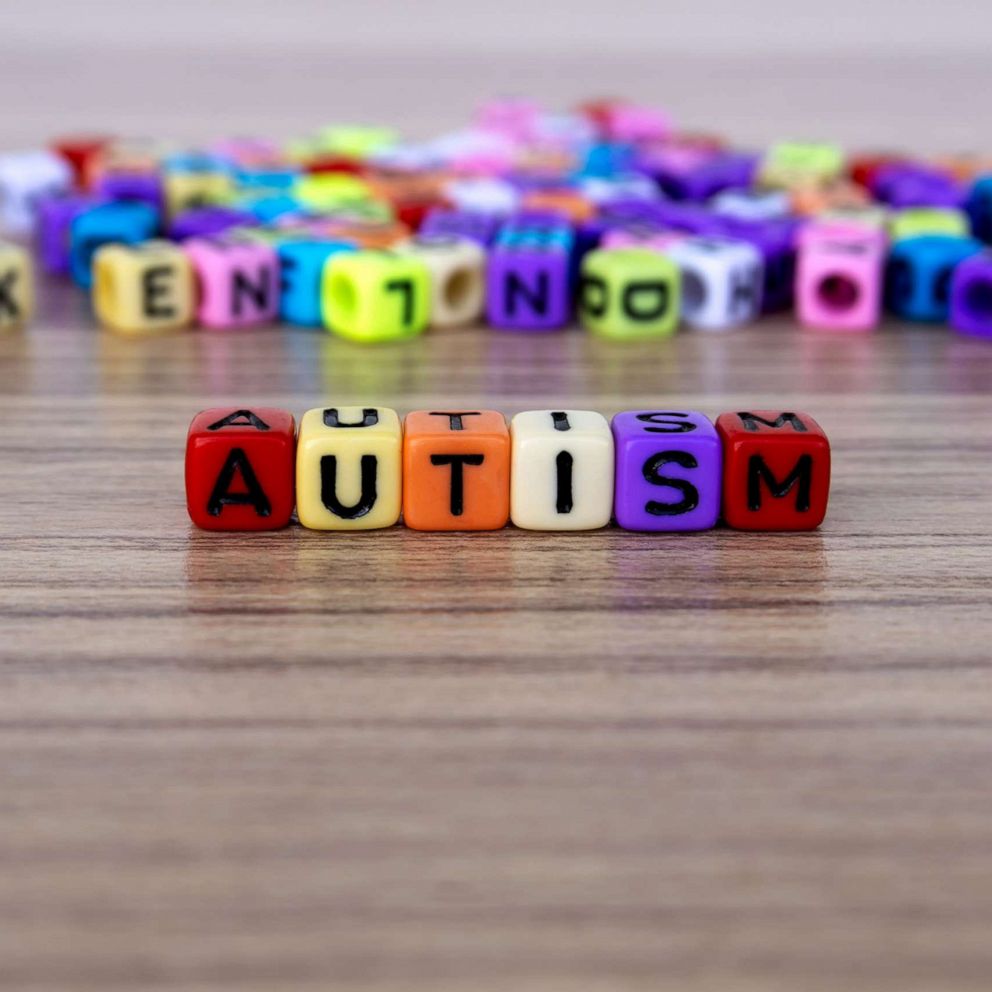One mom is making it her mission to champion her kids with autism by sharing and not suppressing their stimming behaviors.
Jessi Brown, the mother of two behind the @siblingsonthespectrum Instagram account, shared a post back in March of her son vocalizing and flapping his arms and her daughter repeating lines from a Disney movie.
"I've gotten asked before if I feel comfortable sharing videos of my son when he happily stims like this, as if it's something 'vulnerable' (AKA 'embarrassing'…let's call a spade a spade) that should be kept hidden," Brown wrote in the accompanying Instagram caption. "That's sort of the entire point of advocating for my child on this platform- to do my part in promoting the acceptance and inclusion of all that autism can be."

According to Brown, both of her children -- a 10-year-old daughter named Lyla and an 8-year-old son named Buddy -- have autism and frequently express themselves through stimming.
What is stimming?
Chiara Graver, a behavior analyst at the Cleveland Clinic Children's Center for Autism in Ohio, explained to "Good Morning America" that stimming is not exclusive to kids and adults who have autism.
"Stimming is … repetitive patterns of behavior or restricted patterns of behavior. So, it could be physical, where kids might, you might see hand flapping," Graver said. "It's anything that they do that, maybe we don't know why they're doing it, they're not doing it to get something, they're not doing it because they are trying to escape something, but it's just something that feels good to them or they enjoy doing."
"People across the board, different ages, everybody kind of has something that they do that can fall in that category," Graver added.
Raising awareness about stimming
Brown told "GMA" that her children's stimming behaviors vary, and oftentimes, the behaviors are positive expressions and nothing to be alarmed or concerned about.

"[Buddy] is a big time arm flapper. He flaps when he's excited. Sometimes when he's overwhelmed, mad, usually when he's incredibly happy, that is when he flaps his hands," Brown said. "He's also a big time vocal stimmer, so he makes a lot of -- unintelligible to us -- vocal sounds, vocal stims that are usually just, we call them his happy noises or his happy sounds, because that's what they are."

With her daughter Lyla, Brown explained that she repeats sentences and phrases, often from Disney movies, through echolalia and scripting, a type of echolalia where one follows a script.
Graver defined echolalia as the "repeating of words or phrases" from songs, movies or TV shows.
"Someone might repeat immediately -- immediate echolalia [is] where they hear it and they automatically say it back -- or you might have what is called delayed echolalia. [That's] something I heard in a different context or yesterday, and I'm repeating it back, and it may or may not be contextual," Graver explained.
"Scripting could just be like, 'I've learned a certain response to something,'" Graver continued. "So, a lot of our kids, if they're doing a greeting or they're meeting someone for the first time, [they] might have learned to say, 'Hi, I'm Chiara, what's your name?' And it's a script that they learned that they're applying to that situation."
"Don't stop their happy" and encouraging stimming
Brown said she doesn't try to prevent her kids from stimming, and in turn encourages what makes them who they are.

"In our family, if our child is stimming, it's not harming themselves or anyone else around them, we do not stop that stim," the mom of two said. "A huge part of what I like to do, as much as I can, is advocate for that and [emphasize] how important it is to not stop a child from stimming, no matter how silly it looks, no matter how awkward it can be in a public place."
The idea behind it is captured in a mantra she refers to as "Don't hide their happy."
"I wish that so many more people would abide by -- would live by -- 'Don't hide their happy.' If all of these neurotypicals in the world are allowed to be happy and allowed to exist and to take up space, why can't my child also exist how he is and how she is like? They also take up space just like everyone else," Brown said. "I'm not going to ever try to make my child stop being happy."
Graver added that at times, stimming can be misunderstood or even shunned, but it shouldn't be.
"There is probably a stigma around if somebody doesn't understand or sees that out in the community, that they're going to think it looks different, but there really shouldn't be," Graver said.
"With stimming, I think it's a misconception that that's something we need to stop, that's just kind of who that person is," Graver continued. "It's really just kind of something that makes them unique. It's not something that we need to draw attention to, or make fun of, or really do anything."







